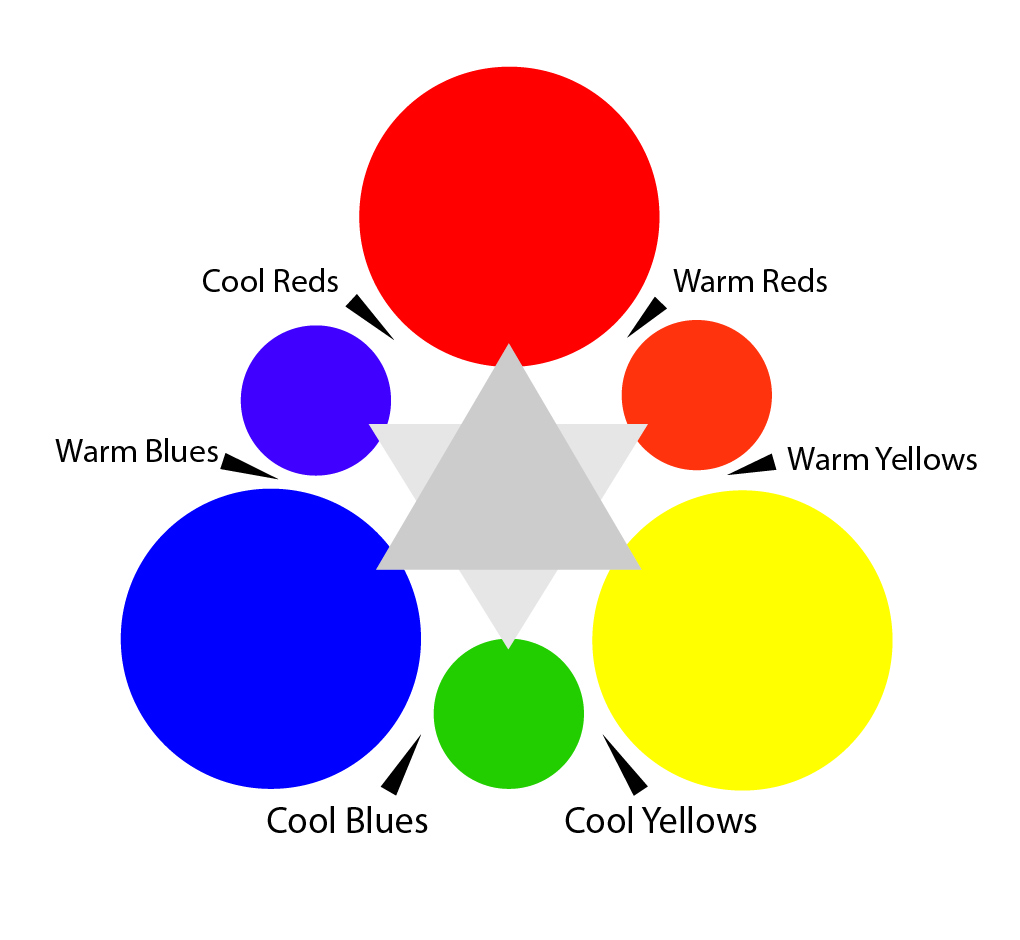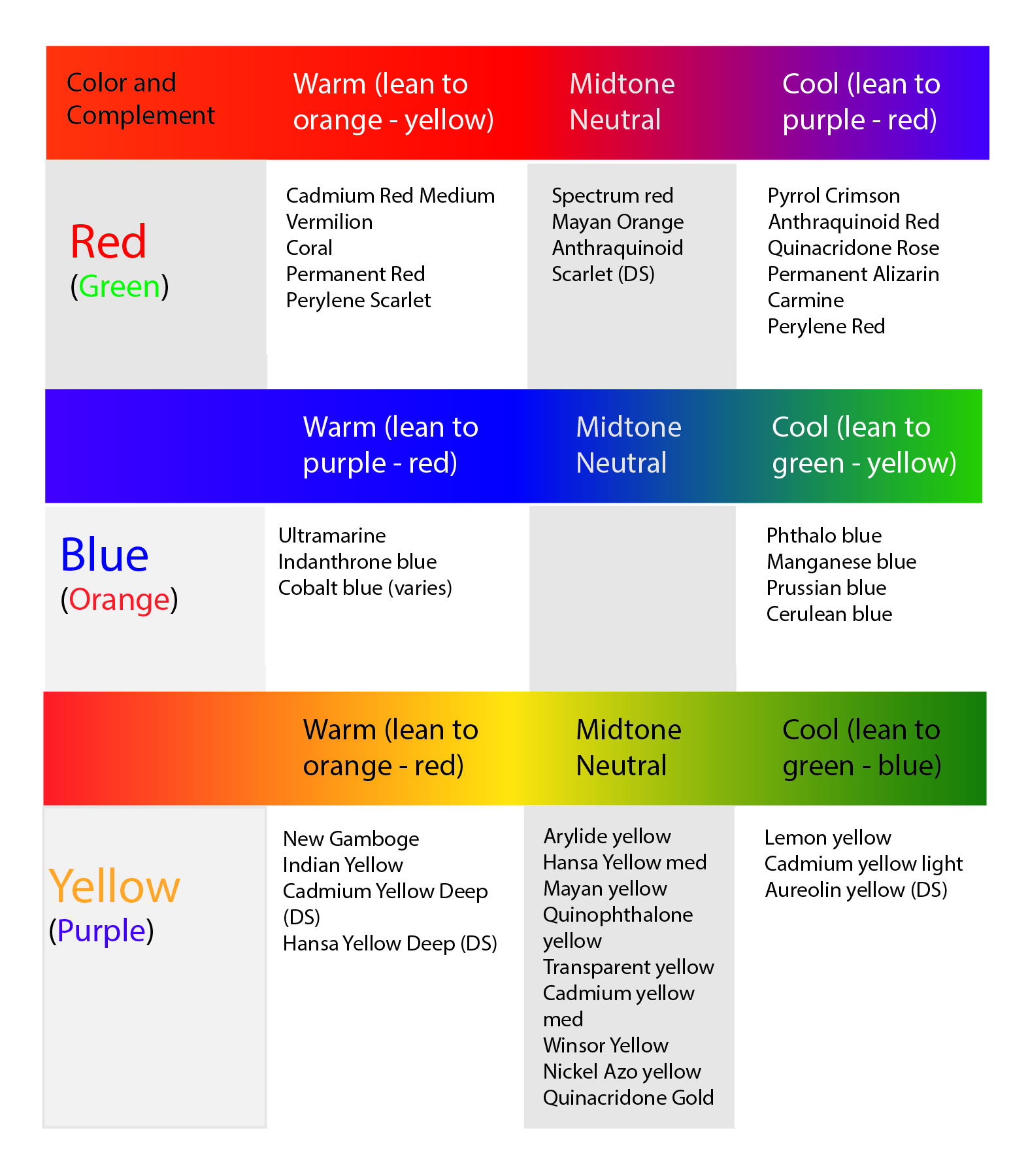Color Mixing Chart
A color mixing chart is handy to have around, so I’ve created one below for
you to use. First, here’s a quick visual
reminder about how color mixing works.

Red, blue and yellow are primary: all other colors come from mixing primary colors in various combinations:
- Red + blue = purple
- Blue + yellow = green
- Red + yellow = orange
Beyond those basics, your success at mixing specific hues to get your desired outcome is based on understanding the warmth or coolness of a color and the complement color of the color you are mixing. I talk about this concept in more detail here, but basically, here’s how it works:
- First, look at the color circle picture and imagine a cool red. Cool reds are “bluer” in that they lean toward the purple-blue side of the color circle. A warm red leans toward orange and yellow.
- Second, note that the color directly across from red is green. Green is the complement of red, meaning if you mix green with red, you’ll get gray. They sort of cancel each other.
Why Use a Color Mixing Chart?
A color mixing chart like the one below is important because when you combine primary colors to get secondary and tertiary colors, your specific hue choices make big differences in the outcome.
If you choose two primary colors that lean toward the complement of the desired mixed color, the result will be dull. For example, let’s say you are mixing red and blue to get a purple. If you choose a warm red and a cool blue, you’ll get a dull purple. This is because warm reds and cool blues lean towards yellow, and yellow is the complement of purple.
But if you choose two primary colors that already lean toward purple (a cool red and a warm blue), the result will be a vibrant purple.
The same principle applies when you mix up greens and oranges. If you want a vibrant green, you would want to choose a cool blue and a cool yellow. If you choose a warm yellow, the red in that shade would dull the green, because red is green’s complement color. If you want a vibrant orange, you would want to mix a warm red and a warm yellow, as both lean toward orange. If you pick a cool yellow, the bluish tone will dull the orange.
The tables below list some common watercolor paint hues and where they fall in the color circle.

I hope this helps when you are mixing colors for your paintings. You may want to create your own color mixing chart using the specific paints that you own.